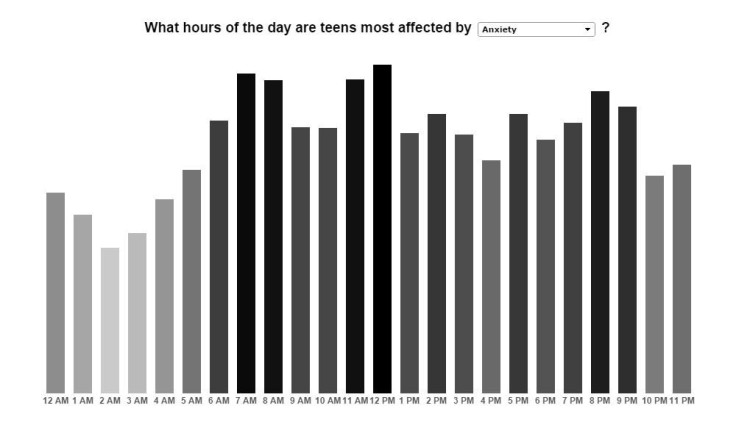Crisis Text Line Shares Data On When And Where Teens Are Most Affected By Anxiety, Depression, And Suicide

Teens today send 3,339 text messages a month, 4,000 if they’re female, Nancy Lublin, CEO of DoSomething.org and founder of CrisisTextLine.org (CTL), cited in her TED Talk. And it’s a statistic she’s hoping to use to save the lives of millions of teens.
Some background: DoSomething.org is a campaign for social change. They blast teens with email and texts of fun and creative service opportunities that range from petitioning for greener schools to putting a stop to bullying, all in an effort “to make the world suck less.”
But one day, as Lublin explained, teens started to write back more than whether or not they were interested in the opportunity. Instead, one teen wrote back they didn’t want to go to school because they were being bullied. Another wrote after being caught inflicting self-harm, she had recently started again. And to Lublin, the worst text she received (and one she won’t ever forget) is the teen who didn't know what to do about being repeatedly raped by her father.
Thus, CTL was born: an independent subsidiary of DoSomething.org that offers millions of teens the chance to text and receive crisis counseling and referrals. An article in The Atlantic cited CTL has helped 70,000 people since it launched a year ago. And on CTL’s website, there is a real-time update of the number of messages being exchanged. As this sentence is being typed, it’s three, 370, 547.
The amount of messages exchanged isn’t the only data CTL has collected. In newly released, interactive charts, CTL revealed which crises occur most by day (anxiety on Wednesday, suicidal thoughts on Sunday), by hour (between 7 and 8 p.m. for depression) and by state (sexual abuse is common in Mississippi, Iowa, and Montana). Users can choose from one of four total charts and select the crisis type from a drop down menu for more information on CTL's trends.
“There is no census on bullying, and dating abuse, and eating disorders, and cutting, and rape. No census,” Lublin said. “Maybe there are some studies. Some longitudinal studies that cost lots of money, and took lots of time. Or maybe there’s some anecdotal evidence. Imagine having real-time data on every one of those issues. You can inform legislation, you can inform school policy…This is really, to me, the power of texting and the power of data.”
Twenty-eight percent of high school students reported having felt sad or hopeless in 2011, according to the Department of Health and Human Services. That's up from 26 percent in 2009. And the percent of adolescents ages 12 to 17 who have had at least one major depressive episode is eight percent, no less or more from 2008 to 2011.
Part of the reason Lublin thinks teens started reaching out to DoSomething.org in the first place is because there was really no one else to talk to. Considering a majoriy of those struggling with these types of crises and issues don't seek treatment, a service like this could help to usher in the positive change teens need for the sake of their mental health.
Oh, and CTL's message count now? Three, 370, 861 — and counting.



























